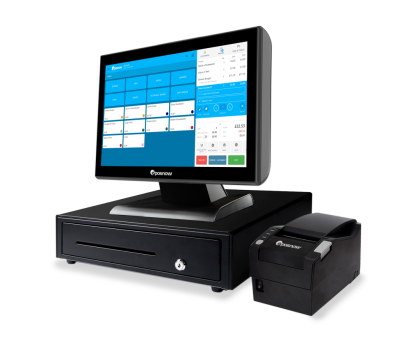Restaurant Location Strategy: Tips and Tricks
Location, location, location. It's the mantra of every successful business, and restaurants are no different. With the right restaurant location, your business can thrive. But how do you choose the best location for your restaurant?
There are a few things to consider when choosing a location for your restaurant, including foot traffic, competition, and demographics. This blog post will give you some tips and tricks for finding the perfect restaurant location.
So grab yourself a cup of coffee (or a glass of wine, we won't judge!), and let's get started.
Why your restaurant location matters
Picture this. You're opening a new restaurant in a location that you think is perfect. But after a few months, you're not getting the sales you had hoped for.
This is awful because you've already invested so much into restaurant branding, you've done your research on the competition, and you're offering a great product or service. So what's the problem?
Chances are, your location is the issue.
What is foot traffic?
Foot traffic refers to the number of people who walk by your restaurant daily. If you're in a high traffic area, that means there are a lot of potential customers walking by your business each day.
For example, let's say you're opening a new coffee shop. You could choose to locate your business in a busy downtown area or in a residential neighborhood. The downtown area will have more traffic because there will be more people walking around. But the residential neighborhood will have fewer coffee shops, which means less competition.
TIP: If you are opening a coffee shop, check out our blog on the Starbucks location strategy. There's nothing quite like learning from the coffee giant of the world, right?
What is the competition?
Competition refers to the number of other businesses in your area that offers similar products or services. For example, if you're opening a new Italian restaurant, you'll want to consider the number of other Italian restaurants in your area.
If there are already a lot of Italian restaurants, that's not necessarily a deal-breaker. But it does mean that you'll need to find a way to make your restaurant stand out from the crowd. We'll talk more about how to do that later, but here's where looking into restaurant trends and understanding what customers want can come into play.
10 tips for finding the perfect restaurant location
Now that we've gone over why your restaurant location is important let's talk about how to find the perfect spot for your business. Here are 12 tips to get you started:
1. Research zoning laws
Before you start looking for a restaurant location, it's important to understand the zoning laws in your area. Zoning laws are regulations that dictate how the land can be used. They exist to control growth, protect property values, and ensure public safety.
Zoning regulations will vary depending on your city or state, so it's important to do your research. For example, New York City is now allowing the restaurant to set up shop on sidewalks, making al fresco dining a permanent fixture in the Big Apple. These outdoor dining establishments became extremely popular during the pandemic as a way to allow people to eat out while still social distancing. Now, lawmakers want to make this a permanent change.
Imagine if you weren't aware of this change in the law. You had your heart set on your restaurant's location being there but opted for another city with outdoor space. You then find out later that you could have opted for the venue you wanted originally.
2. Know your customer base
Who is your target customer? This is an important question to answer when choosing a location for your restaurant.
If you're targeting young, hip customers, you'll want to be located in an area where they hang out. This could be near a college campus, in a trendy neighborhood, or near popular nightlife spots. On the other hand, if you're targeting families with young children, you'll want to be located in a residential area with easy access to public transportation or nearby parks and playgrounds.
A great way to figure out your target customer is by carrying out market research. This will give you insights into the demographics of your potential customers, their income levels, and what they're looking for in a restaurant. This is one of the most important aspects to add to your restaurant location analysis, so be sure to do a thorough job.
3. Consider your competition
As we mentioned earlier, it's important to understand the level of competition in your area when choosing a location for your restaurant. If there are already a lot of restaurants offering similar products or services, you'll need to find a way to make your business stand out.
One way to do this is by understanding what your competition is doing and how they're marketing their business. You can do this by conducting a SWOT analysis, which will help you identify the strengths, weaknesses, opportunities, and threats of your competition. This information can be extremely helpful when it comes to choosing a location for your restaurant.
Let's see this in practice. Let's say you're planning on opening a new sushi restaurant in Chicago. Your SWOT might look something like this:
Strengths
- There are already a number of sushi restaurants in the city, so customers are familiar with the product
- Sushi is a fairly healthy option, which is something that more and more people are looking for
- Chicago is a major city with a large population, so there are a lot of possible customers
Weaknesses
- The competition is already fairly saturated, so it might be difficult to stand out
- Sushi can be a bit pricey, so you'll need to find a way to make your restaurant affordable without sacrificing quality
Opportunities
- There's a growing trend of people wanting to eat healthily, so there's an opportunity to market your restaurant as a healthy option
- You could also target a specific demographic, like college students or young professionals, who are looking for a quick and easy meal
Threats
- There are 3 sushi restaurants in a 2-mile radius, so customers might opt for their closest options
- The economy might tank, which would result in people cutting back on spending, including dining out
As you can see, conducting a SWOT analysis gives you a better understanding of your competition and how to position your restaurant in the market. This is vital information to have when choosing a location for your business.

Gain all the advantages of a POS system with detailed, flexible, downloadable reports, and so much more:
- Manage and update products quickly with easy-to-use software
- Expand your business into multiple channels and integrate with a variety of online platforms
- Manage multiple locations and salespoints with multi-site management
- Keep queues short with streamlined, modifiable sales processes
- Choose a setup that suits you with software and hardware options
4. Accessibility is key
Another important factor to consider when choosing a location for your restaurant is accessibility. You'll want to make sure that your restaurant is easily accessible for customers, whether that's by public transportation, by car, or on foot.
If you're located in an area that's difficult to get to, chances are people won't bother making an effort to come to your restaurant. On the other hand, if you're located in a convenient spot, people are more likely to drop by spontaneously for a meal.
With this in mind, make sure you're near to public transport spots or have good parking options around. You may even want to look for a venue with its own parking lot.
5. Make sure your location is visible
You'll also want to make sure that your location is visible from the street or sidewalk. If customers can't see your restaurant, they won't know it's there. This is why storefronts are so important for businesses, especially restaurants.
6. Consider the ambiance of your location
Another great tip for carrying out your restaurant location analysis is to consider the ambiance of your potential location. The atmosphere of your restaurant can have a big impact on how customers perceive your business, so it's important to choose a location that fits the image you're trying to create.
For example, if you're planning on opening a high-end restaurant, you'll want to avoid locations that are too noisy or chaotic. On the other hand, if you're planning on opening a casual eatery, a location in a busy area might actually work in your favor.
7. Understand space turnover
When conducting a restaurant location analysis, it's also important to understand space turnover. In layman's terms, space turnover is the rate at which businesses move in and out of a particular location.
We all know that one spot, or maybe even a whole strip, in our town where businesses seem to open and close every few months. Just when you get comfortable with a new restaurant or store, it's gone and something new has taken its place.
As the old saying goes, "if it sounds too good to be true, it probably is." So don't take a chance on a commercial space in which so many other businesses have tried and failed. If you're considering an area you're unfamiliar with for your restaurant's location, take your time and do your research.
8. Spot out complementary businesses closeby
In our restaurant marketing and restaurant social media strategy blogs, we discuss the benefits of collaborations and partnerships when marketing your restaurant business.
The same goes for your restaurant location. When choosing a spot for your business, look for complimentary businesses nearby that you could partner with. For example, if you're opening a coffee shop, locating yourself next to a bakery would be a great way to increase foot traffic to both businesses. Or, if you're opening up a bar near a college campus, why not be near some late-night food options?
9. Do a feasibility study
Once you've narrowed down your list of potential locations, it's important to do a feasibility study. This simply means conducting research to determine whether or not a particular location is viable for your restaurant business.
This research should include:
- A market analysis: to help you understand your potential customer base
- A competition analysis: to help you understand the competition in your area
- A financial analysis: to help you understand the costs associated with your chosen location
By conducting a feasibility study, you can be sure that you're making the best decision for your restaurant business. And, in the end, that's what a restaurant location analysis is all about.
10. Consider collective venues
Okay, so you've done your restaurant location analysis and are feeling confident about the decision you've made. But there's one more thing to consider: collective venues.
Collective venues are places where people gather for a common purpose, such as working, studying, or shopping. And, as you might have guessed, they can be great places to open a restaurant.
Some examples of collective venues include:
- Shopping malls
- Office buildings
- College campuses
- Airports
If you're considering a location in a collective venue, there are a few things you need to keep in mind. First, you'll need to make sure that your restaurant concept is a good fit for the venue. For example, if you're considering an airport location, your restaurant will need to be able to accommodate the quick turnover of customers.
Second, you'll need to make sure that your restaurant is visible in the venue. For example, if you're located in a shopping mall, you'll want to make sure that you're around centrally located restaurants in the food court.
Third, you'll need to make sure that you have the necessary permits and licenses to operate in the venue. For example, if you're considering opening a food truck on a college campus, you'll need to get permission from the school.
By considering a collective venue for your restaurant, you can tap into a built-in customer base and increase traffic to your business. Just be sure to do your research before making a decision.
Final thoughts
Often, when people research how to open a restaurant, they focus on the fun stuff, like coming up with a restaurant name and creating a menu. But the truth is, finding the perfect restaurant locations is just as important as any other decision you'll make about your business.
These tips and tricks will help you conduct a thorough restaurant location analysis and choose the best business location for your needs. So what are you waiting for? Get out there and start looking for your dream location today!
A restaurant POS
Remember, the right location will attract customers, but it's up to you to keep them coming back. That's why having a great restaurant POS system is so important.
At Epos Now, we offer a variety of POS systems for the restaurant industry, from small cafes to large restaurants. And our systems come with all the features you need to run your restaurant smoothly, including:
- Table management
- Inventory management
- Menu engineering
- Customer loyalty programs
- Online ordering
- Reporting and analytics
And more!
Get in touch with us today to learn more about our restaurant POS systems and how we can help you take your business to the next level.




